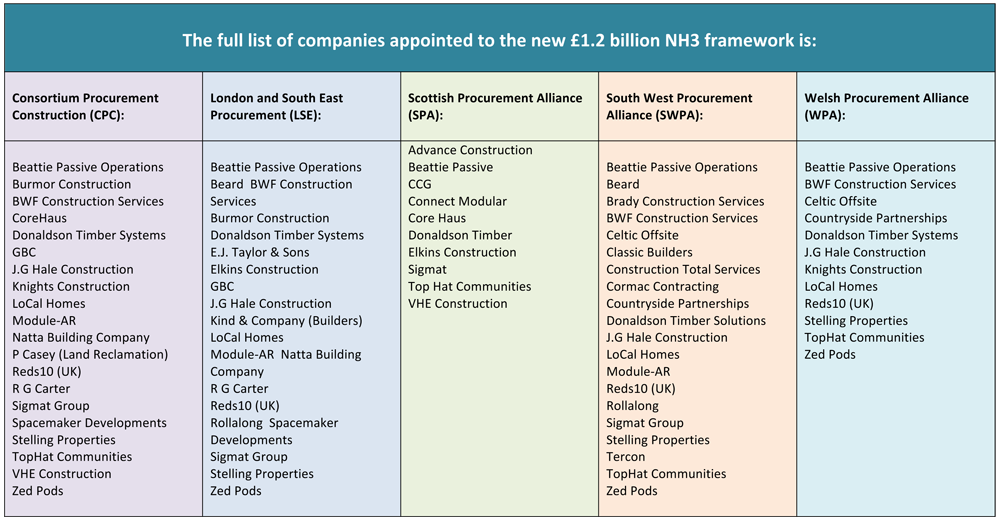By Dean Fazackerley, Head of Technical Procurement, LHC Procurement Group
With the UK under pressure to deliver hundreds of thousands of new homes a year to address a chronic housing crisis, modern methods of construction (MMC) are increasingly recognised as a means to deliver quality housing at pace. Some reports indicate that MMC homes can be constructed at least 30% faster than traditional methods, and with up to a 25% reduction in costs. MMC can also support the delivery of greener homes of a higher quality; components are less likely to be faulty because they are manufactured in controlled factory conditions, which can also lead to significant reductions in waste.
Despite this, the take-up of MMC has been modest owing to some trepidation within the sector. We believe this could be down to a misunderstanding of the barriers to entry into MMC, and complications with public sector procurement constraints. It can be seen as an expensive luxury, with many manufacturers working to their own designs, and complex to manage with new supply chains and stakeholders to work with. We have also heard the perception that public procurement constraints limit a local authority’s ability to develop the right relationships required for MMC.
However, through framework agreements, the contracting authorities can manage this process much more easily, with a single point of contact and access to technical expertise that aligns with all RIBA Plan of Work 2020 stages, from the initial stages through to design, construction, handover, and use.
Dedicated MMC frameworks
Earlier this year, our Modern Methods of Construction of New Homes (NH3) framework went live. It is the successor to NH2, which enabled £93.5m-worth of offsite homes projects with a total forecast value of £277m.
NH3 has been shaped by extensive engagement with housing contractors and manufacturers. It allows for a range of housing types, from low rise and medium/high rise, through to specialist accommodation such as care homes. The framework also provides for delivery of ‘room in the roof’ projects and adaptive pods.
Framework agreements like this allow relationships to flourish over a longer-term period and help set out an integrated supply chain. We see it as a vital tool to drive programmes for low-carbon, modern homes for housing associations and local authorities across the country
Quality assessments
Our commitment to becoming a Gold Standard framework provider means that as part of the development of NH3, we conducted an in-depth assessment of all potential suppliers.
This began with a questionnaire tailored depending on the workstream: 3D modular systems; 2D panelised systems; main contractors delivering MMC solutions; and groundworks and site preparation for MMC housing projects.
To evidence their capability to deliver MMC projects for the workstreams they had applied for, applicants to the framework were quizzed on everything from what training they provide staff with to how they demonstrate KPIs, and how they monitor customer feedback during projects. For consistency, two colleagues from our dedicated centre of technical excellence assessed each workstream. Following this, we spent a day on site with each manufacturer to conduct in-depth factory assessments to assess their factory process. Again, applicants were scored for the following:
Quality of products
Including structure, cladding, finish, and M&E installation, throughout the construction process from goods in down the production line to storage and dispatch.
Pre-manufactured value – what level of automation was used throughout. Environmental and waste management – what measures were taken to minimise environmental impact and waste management. For example, how do they reduce energy usage on premises in terms of heating and lighting? How do they manage water usage during manufacturing and in the offices? Which materials are they using in manufacturing? And are there any EV charging points available to use?
Process management
We observed the quality control process for elements down the production lines, how products are marked up on the production line, the worksheets for products, and inspection and sign-off at each stage. Quality of temporary weather protection during storage at the factory/on site and transportation. Scores from the questionnaires and factory assessments were added together to calculate a final score, and those who scored the highest were awarded the highest allotted award.
Appetite for offsite
One thing that was evident during the assessment process was the sheer passion among industry professionals who want to champion and promote MMC. Fortunately, we are seeing local authorities beginning to look past the barriers to entry to see the value MMC can bring; our NH2 framework – the successor to NH3 – led to a pipeline of nearly 5,000 MMC homes across 133 projects. The government’s push towards MMC in its policies – especially the Affordable Homes Programme – should see this figure increase further.
CLICK HERE to find out more about LHC and its NH3 framework






